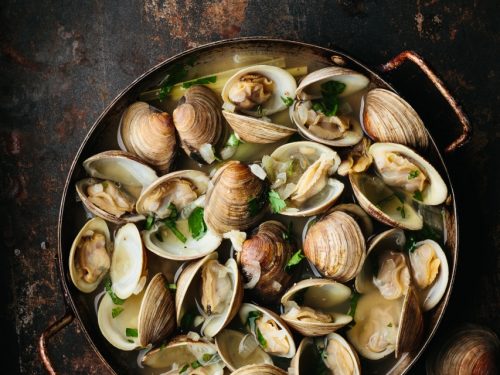Clams are delicious, low in calories and provide important nutrients such as selenium, zinc and vitamin C. They are also rich in amino acids, which aid growth and tissue repair.
Quahogs are the most common type of clam eaten in the US and around the world, but cockles, dog cockles and mussels are also popular shellfish options.
Overview of eating Clams
Clams are an edible shellfish that can be eaten raw or cooked. They are an excellent source of nutrients, including vitamin B12 and omega-3 fatty acids.
They are also a low-calorie source of protein. They are an important source of iodine, which is a mineral that is essential for proper thyroid functioning in the human body.
In addition to being a good source of nutrients, clams help clean waterways and restore ecological balance by filtering out excess nitrogen and phosphorous. This can improve the health of a region’s water supply and prevent eutrophication, a condition that causes mass fish deaths.
Culinary uses and traditional dishes featuring Clams
Clams are one of the most versatile shellfish in terms of culinary use. They are often stuffed, fried, steamed or served in chowder, dips and stews.
Some of the most common dishes featuring clams include fried clams, clam chowder, clam stew and machas a la parmesana. This dish is a classic Chilean recipe that consists of razor clams broiled with salt, butter and parmesan cheese.
For a more substantial meal, try this clam stew that features loads of clams simmered in a seasoned tomato and wine broth. This hearty stew is a Northeast staple that will warm you up on a cold day!
Availability and market trends of Clams consumption
During the past few decades, Florida’s commercial hard clam culture industry has grown to be one of the two largest providers of cultured clams in the United States (the hard clam culture industry in Virginia being the other major supplier).
Clams are typically grown in sandy or muddy substrate, covered with a predator mesh that discourages predators, and left to grow naturally for about 1.5 to 3 years. When clams are ready to be harvested, they can be retrieved using rakes or hydraulic dredging.
Health benefits and concerns
Clams are a versatile bivalve mollusk that can be eaten raw or cooked in a variety of ways. They are low in fat and rich in protein, making them a great addition to a healthy diet.
They are also an excellent source of vitamin B12 and iron, which can help prevent anemia. Moreover, clams are high in selenium and vitamin C.
The two nutrients are associated with good health and a strong immune system. They are also beneficial for the cardiovascular system and gastrointestinal tract.
Consuming clams can also improve your bowel function and help with weight loss. They are also high in choline, a substance that can help regulate blood pressure and heart rate.
Sustainability issues surrounding the harvesting and consumption of Clams
Clams are an important food source for marine organisms, primarily phytoplankton. They use dissolved inorganic nitrogen, found in seawater, to grow, and incorporate that nitrogen into their tissues and shells.
They also release nitrogenous waste as urine, which is eaten by phytoplankton. These processes cycle nutrients and prevent algal blooms that can cause harmful effects to human health and ecosystems.
To assess the sustainability of the hard clam aquaculture industry in Florida, three environmentally-beneficial ecosystem services were assessed (water filtration, nitrogen removal and carbon storage). Replacement cost values for each service were determined by economists at UF.

